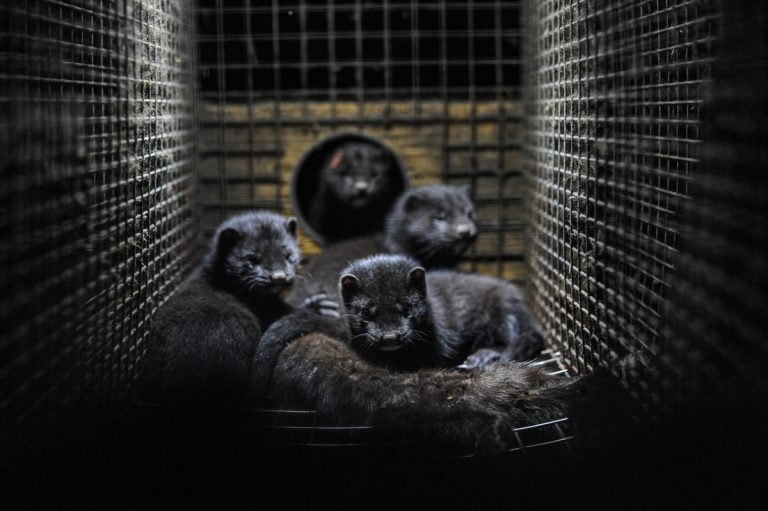Why the search for animals harbouring coronavirus is a matter of life and death

Ever since the coronavirus started spreading around the world, scientists have worried that it could leap from people into wild animals. If so, it might lurk in various species, possibly mutate and then resurge in humans even after the pandemic has subsided. Because it is believed that animals brought the virus to us in the first place, resurfacing through animals once more would bring the tale of SARS-CoV-2 full circle.
According to the scientific publication Nature, “strong evidence suggests that the virus originated in horseshoe bats,” possibly hitching a ride on other animals before infecting people. In the current stage of the pandemic, with hundreds of thousands of confirmed COVID-19 infections every day, people are still driving transmission of the virus. But years from now, when community spread has (hopefully) been suppressed, a reservoir of the virus in free-roaming animals could become a recalcitrant source of new flare-ups, and that’s pretty worrying.
When, almost a year into the pandemic, a seemingly healthy wild mink tested positive for SARS-CoV-2 in Utah, no free-roaming animal was known to have caught the virus before, although researchers had been watching for this closely. But wild animals are not the only ones to have drawn scrutiny. Studies have shown that SARS-CoV-2 can infect many domesticated animals, from cats and dogs to pumas, gorillas and even snow leopards in zoos, as well as the infamous farmed minks in Denmark. Previous outbreaks in mink farms have already shown that infected animals can pass the virus back to humans.
Although these cases have raised concerns, researchers are less worried about viral outbreaks in domestic and farmed animals because such eruptions can be kept in check through quarantining, vaccination and culling, explains Nature. If the virus spreads in wild animals, however, it will be much more difficult to control.
Just like it mutated among humans, the virus could evolve as it circulates among animals, possibly in ways that threaten the efficacy of vaccines or make the pathogen more deadly and infectious to people. “Not to sound any alarms, but everything we don’t want to see with this virus seems to happen,” says Arinjay Banerjee, a coronavirus researcher at McMaster University in Hamilton, Canada.
Over the past year, scientists have tried to gauge exactly how grave the risks are. Global efforts are underway to survey wildlife and catch ‘spillovers’ as soon as possible. Researchers are testing animals from homes, zoos, shelters, veterinary clinics, farms and their surroundings. If any positive cases are detected, countries immediately notify the World Organisation for Animal Health (OIE), which is based in Paris.
On top of that, scientists have used computational models and studied cells and whole animals to identify the species most vulnerable to infection. In one year, they’ve collected as much data about the susceptibility of different species to SARS-CoV-2 as was accumulated over the past 50 years for influenza, says Martin Beer, a virologist at the Federal Research Institute for Animal Health (FLI) in Greifswald, Germany.
If you’re already panicking about potentially having to undergo more lockdowns in the next few years, it should be said that animal infections are rare, and some researchers are reassured by the data collected so far. However, others are more cautious. The virus is known to infect a wide range of animal species, which combined with the large number of infected people, means that, in principle, the virus has had millions of opportunities to jump from people to animals. And of course, many of those jumps could be missed by scientists.
Which animals are primary suspects?
At the beginning of the pandemic, pigs were top of the watchlist. They are known to incubate other viruses, such as influenza, and they live in huge numbers in close proximity to humans—some 300 million pigs are farmed in China, where the pandemic began.
Pigs can also host coronaviruses. In 2018, researchers described a new bat coronavirus that had killed some 25,000 pigs in southern China. However, when researchers began artificially infecting pigs and piglets with SARS-CoV-2, they found that it did not replicate well. These studies suggest that pigs are largely resistant to infection with the virus.
Then, bats became the centre of attention. They are the purported source of SARS-CoV-2, and researchers worried that the virus could spread into new bat populations. In April 2020, the US Fish and Wildlife Service advised scientists to suspend all research that involved capturing and handling bats. As with pigs, however, the results of studies into bats have been generally reassuring.
So, researchers began turning their attention to other animals that are genetically closely related to people, live in close contact with humans or are known sources of other viral outbreaks. Laboratory experiments have ruled out a horde of potential hosts—raccoons, for example, and important livestock such as cows, ducks and chickens, which all seem resistant to infection.
But the experiments have found many animals that can harbour the virus and pass it on. Among them are ferrets, cats, raccoon dogs, white-tailed deer and several species of monkeys. Infected animals that are sociable (in a herd or with humans) pose a larger risk than lone roamers.
A growing number of real-world studies are beginning to reveal the true risk that animals pose. As more reports surfaced of pets who had caught COVID-19 from their sick owners, researchers took an increased interest in cats, which are often free to slink between households and mingle in the wild. However, their possible role in COVID-19 transmission remains a subject of debate.
For now, fast-spreading variants that were first identified in the UK, South Africa and Brazil have not yet been tested for their ability to infect animals. The new variants’ global spread increases the possibility that house mice, and perhaps also rats, will acquire the infection from people and contaminated environments such as sewers, leading many scientists to expect other ‘surprises’ like the previous mink crisis.





